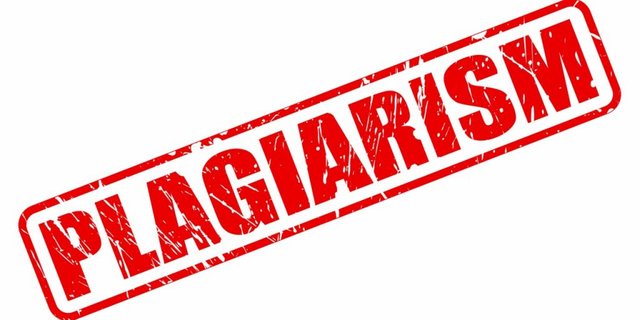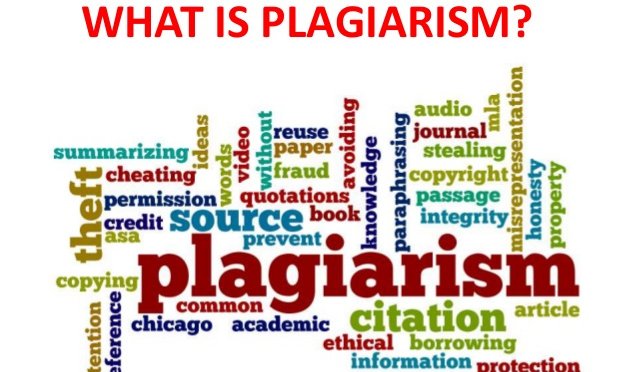Achievement 3 by @ajunwa12, Task : Content Etiquette. Mentored by kinkyamiee

source
Whether you’re interviewing a subject matter expert or introducing key findings from a report, third-party sources can lend extra authority to your work. There’s a difference, however, between weaving external sources into your writing for clout and misrepresenting the source’s ideas or words as your own.
source
Here’s why avoiding plagiarism is so important and how to avoid plagiarism in your work.
Trying to write without plagiarism?
Grammarly can help.
What is plagiarism?
According to the Merriam-Webster dictionary, the verb “to plagiarize” means:
“to steal and pass off (the ideas or words of another) as one’s own : use (another’s production) without crediting the source”
The inclusion of the word “steal” in this definition, includes instances when another’s ideas or words are intentionally used without crediting the source. Even accidentally using another’s ideas or words without proper citation, due to carelessness, falls under this definition since your work tries to “pass off” another’s work as your own.
In our tech-forward culture, the simple act of copy-and-paste can seem harmless, but it has serious consequences in academic and professional settings.
source
Why should you avoid plagiarism?
At its core, plagiarism is an ethical issue. A writer who submits plagiarized work is committing theft with the hope of benefiting from that theft. This is true whether you’re turning in a school paper to get an “A” or are a writer by trade expecting monetary compensation.
Avoiding plagiarism is paramount as a writer because it compromises your integrity. Aside from losing the respect of your mentors and peers, it could cost you valuable professional referrals and future career advancement. If you’re still in school, plagiarism may result in lost financial aid or leadership roles.
Additionally, it takes credit or profit away from the original creator of the work which may mean more trouble if the source takes legal action against you.
Here’s a tip: Grammarly offers a plagiarism checker that detects plagiarism in your text and checks for other writing issues.
5 ways to avoid plagiarism
Fortunately, it’s not all scary. Avoiding plagiarism is actually easy to do now that you have a foundational understanding of what it is. To help you steer clear of this taboo, here’s how to avoid plagiarism in your writing.

source
1 Cite your source
When alluding to an idea or wording that’s not your own, add a citation in your writing that identifies the full name of the source, the date it was published, and any other citation element that’s required by the style guide you’re adhering to.
2 Include quotations
If you insert a source’s words into your writing, verbatim, one of the most simple yet obvious ways to avoid plagiarism is by using quotation marks around the text to denote that the words aren’t your own. A direct quote should also cite the source so that readers know who the quote is from.
3 Paraphrase
Paraphrasing is rewriting a source’s ideas or information into your own words, without changing its meaning. But be careful—paraphrasing can slip into plagiarism if done incorrectly.
Successfully paraphrasing without plagiarizing involves a bit of a dance. Reword and format your writing in an original way, and try to avoid using too many similar words or phrases from the source. The key is to do so without altering the meaning of the idea itself. Remember, you’re still using another’s idea so you’ll need to include a citation to the source.
4 Present your own idea
Instead of parroting the source’s ideas or words, explore what you have to say about it. Ask yourself what unique perspective or point you can contribute in your writing that’s entirely your own. Keep in mind that if you’re alluding to a source’s ideas or words to frame your own point, you’ll still need to apply the guidelines above to avoid plagiarizing.
If you’re writing on the same topic for multiple assignments, it can be tempting to recycle some of your previous words—this is called “self-plagiarism”. The risk involved with self-plagiarism is just as high if the publisher or your instructor didn’t give you permission to reuse your old work.
5 Use a plagiarism checker
While conducting your research on a topic, some phrases or sentences might stick with you so well that you inadvertently include them in your writing without a citation. When in doubt, using an online plagiarism checking tool can help you catch these issues before submitting your work.source

